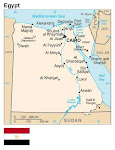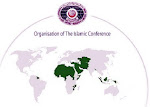 It's the frightening stuff of science fiction...You'll walk out of your cramped city apartment every day into a sea of people, and you'll be sandwiched among them as you go to work or buy food at the market.You'll see scores of homeless people sprawled on the same jam-packed city streets. The ones who are lucky enough to have roofs over their heads will be living in shacks and shantytowns.In the world's largest urban areas, that scenario is less than 20 years away, according to population experts. By 2025, they say, the number of so-called "megacities"-those with more than 10 million people-will balloon from the current 20 to as many as 40.In 1980, there were only 10."The explosive nature of urbanization on the one hand has some hopefulness, but largely it contributes to a significant increase in suffering, extreme poverty, social disease and social disintegration," said Dr. Werner Fornos, president of the Global Population Education think tank and the former head of the Population Institute in Washington, D.C.The world population, Fornos predicted, will swell from the current 6.5 billion to 9 billion by 2050."If we continue to grow at this rate, what this will do to our natural resources ...Population is still the most significant issue, and because of politics and religion, we're not able to come to grips with it," Fornos said.The consequences of such a rapid rise in city inhabitants are dire, since so many megacities will be in the two poorest continents, Africa and Asia. Researchers predict mass homelessness, poverty and unemployment; a dwindling fresh water supply; a sharp increase in air pollution; the spread of disease; and a spike in crime. Most of the cities' governments won't have even close to the resources needed to handle all the people.These will be the top 10 largest cities in the year 2015, according to United Nations forecasts:
It's the frightening stuff of science fiction...You'll walk out of your cramped city apartment every day into a sea of people, and you'll be sandwiched among them as you go to work or buy food at the market.You'll see scores of homeless people sprawled on the same jam-packed city streets. The ones who are lucky enough to have roofs over their heads will be living in shacks and shantytowns.In the world's largest urban areas, that scenario is less than 20 years away, according to population experts. By 2025, they say, the number of so-called "megacities"-those with more than 10 million people-will balloon from the current 20 to as many as 40.In 1980, there were only 10."The explosive nature of urbanization on the one hand has some hopefulness, but largely it contributes to a significant increase in suffering, extreme poverty, social disease and social disintegration," said Dr. Werner Fornos, president of the Global Population Education think tank and the former head of the Population Institute in Washington, D.C.The world population, Fornos predicted, will swell from the current 6.5 billion to 9 billion by 2050."If we continue to grow at this rate, what this will do to our natural resources ...Population is still the most significant issue, and because of politics and religion, we're not able to come to grips with it," Fornos said.The consequences of such a rapid rise in city inhabitants are dire, since so many megacities will be in the two poorest continents, Africa and Asia. Researchers predict mass homelessness, poverty and unemployment; a dwindling fresh water supply; a sharp increase in air pollution; the spread of disease; and a spike in crime. Most of the cities' governments won't have even close to the resources needed to handle all the people.These will be the top 10 largest cities in the year 2015, according to United Nations forecasts:1 — Tokyo, Japan ... 36.4 million
2 — Mumbai, India ... 21.9 million
3 — São Paulo, Brazil ... 20.5 million
4 — Mexico City, Mexico ... 20.2 million
5 — New York-Newark, USA ... 20 million
6 — Delhi, India ... 18.7 million
7 — Shanghai, China ... 17.2 million
8 — Dhaka, Bangladesh, and Calcutta, India ... 17 million
9 — Karachi, Pakistan ... 14.9 million
10 — Cairo, Egypt ... 13.5 million
By 2025, only 10 years later, the picture will change:
1 — Tokyo ... 36.4 million
2 — Mumbai, India ... 26.4 million
3 — Delhi ... 22.5 million
4 — Dhaka ... 22 million
5 — São Paulo ... 21.4 million
6 — Mexico City ... 21 million
7 — New York-Newark ... 20.6 million
8 — Calcutta, India ... 20.5 million
9 — Shanghai ... 19.4 million
10 — Karachi ... 19.1 million
The population explosion in those megacities will mean that everyday activities-like taking the kids to school, driving to the doctor's office or filling the car with gas-could become infinitely more difficult, time-consuming tasks.The ever-thickening smog will get worse, as will the drain on water supplies and other natural resources. The face masks people in Toronto and Asia wore during the SARS scare and still use in heavily polluted cities like Mumbai and Shanghai could become the norm in urban areas around the world in the next few decades."The air pollution and health factors, including the water crisis, will put most of the other issues to shame," Fornos said.And if this scenario sounds untenable, consider this: the most rapid growth is generally not happening in megacities, according to the United Nations Population Division. Instead, it's occurring in the small or medium-sized urban areas, which will also see staggering population increases in the next 10 to 20 years."The megacities are not the ones that grow the fastest," said Hania Zlotnik, director of the U.N.'s Population Division. "Most of the action is in the small cities. That's where most of the population growth is going to be: in the smaller or medium-sized urban centers of developing countries."So the towns that will blossom the most rapidly, in a number of cases, are barely industrialized now. But they will quickly grow into bustling metropolitan centers.The U.N. reports that the top 10 fastest growing cities with populations of 750,000 or more are:
1 — Abuja, Nigeria ... 2007: 1.6 million; 2010: 2 million; annual growth rate: 8.3 percent
2 — Luanda, Angola ... 2007: 4 million; 2010: 4.8 million; annual growth rate: 6 percent
3 — Sana'a', Yemen ... 2007: 2 million; 2010: 2.3 million; annual growth rate: 5.3 percent
4 — Kinshasa ... 2007: 7.8 million; 2010: 9 million; annual growth rate: 4.8 percent
5 — Lomé, Togo ... 2007: 1.5 million; 2010: 1.7 million; annual growth rate: 4.8 percent
6 — Ouagadougou, Burkina Faso ... 2007: 1.2 million; 2010: 1.3 million; annual growth rate: 4.8 percent
7 — Kathmandu, Nepal ... 2007: 895,000; 2010: 1 million; annual growth rate: 4.7 percent
8 — Mbuji-Mayi, Democratic Republic of the Congo ... 2007: 1.3 million; 2010: 1.5 million; annual growth rate: 4.6 percent
9 — Kabul, Afghanistan ... 2007: 3.3 million; 2010: 3.8 million; annual growth rate: 4.6 percent
10 — N'Djamébam, Chad ... 2007: 989,000; 2010: 1.1 million; annual growth rate: 4.5 percent
"It's like a balloon: It's when you're thin that you get fat fast," Zlotnik said. "A megacity may be adding many more people, but the rate of growth is not that fast because it's already so huge."
The cities developing at the highest rate as well as many of the existing and soon-to-be megacities are in Asia and Africa, according to population experts.Mumbai, India, for instance, which is projected to grow into a city of about 21.9 million by the year 2015 and currently is plagued by vast poverty, is a prime example of the plight of the rapidly growing metropolis. "There are 5 million living on the street every night, covered only in newspaper," Fornos said. "The government is unable to cope with this kind of urban growth. ... There's a breakdown in respect for the law, greater crime. A lot of people feel abandoned and are struggling for survival."Jakarta, Indonesia; Manila, The Philippines; Nairobi, Kenya; Lagos, Nigeria; Kinshasa, Congo; Lagos, Nigeria; and Calcutta, India are among other large cities that will see an unmanageable population boom in the coming decades, Fornos said.But despite the depiction of urbanization as the death knell of the world as we know it, Zlotnik said it is actually a positive for society....
To read more go to:
http://www.foxnews.com/story/0,2933,317609,00.html
As in the days of Noah....






















































































.bmp)

























.bmp)